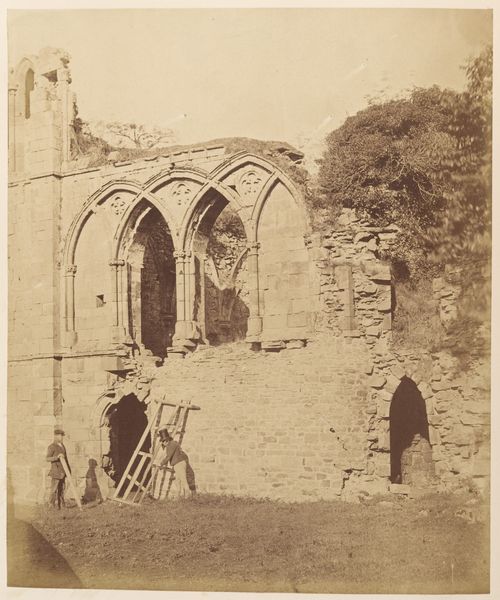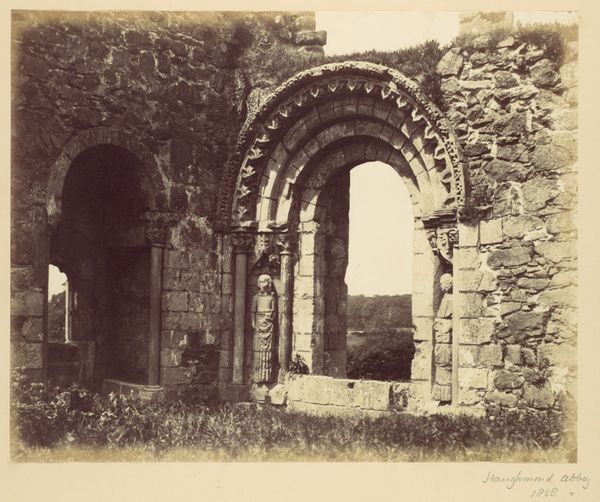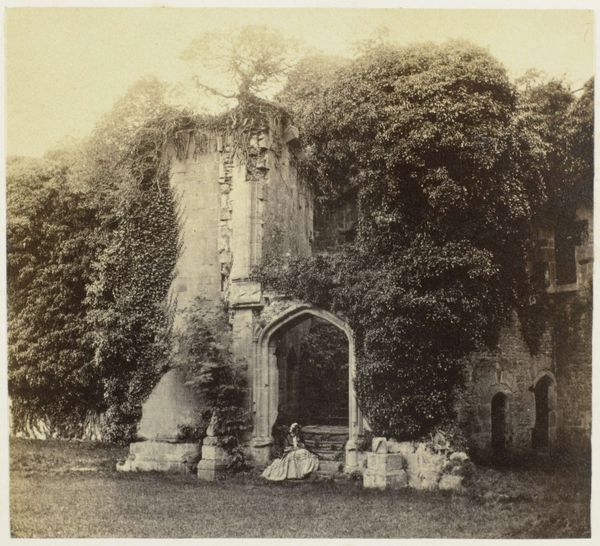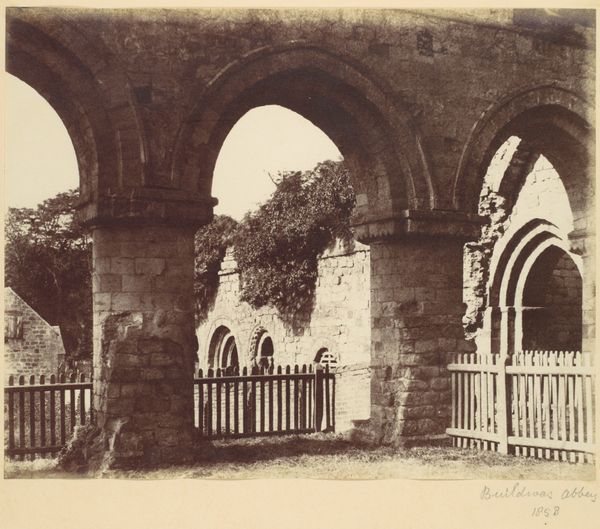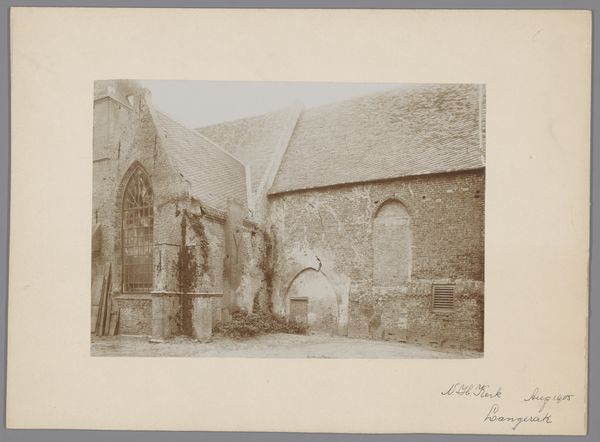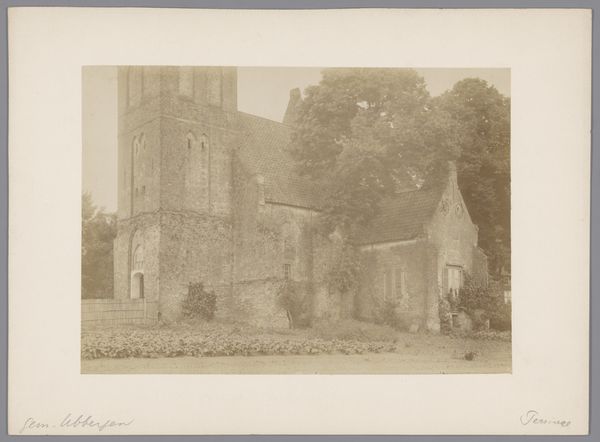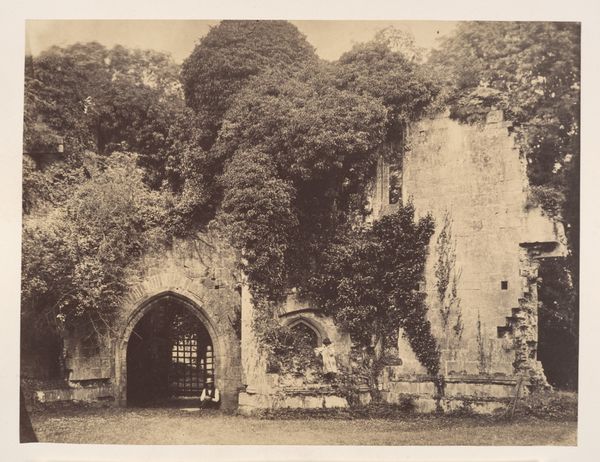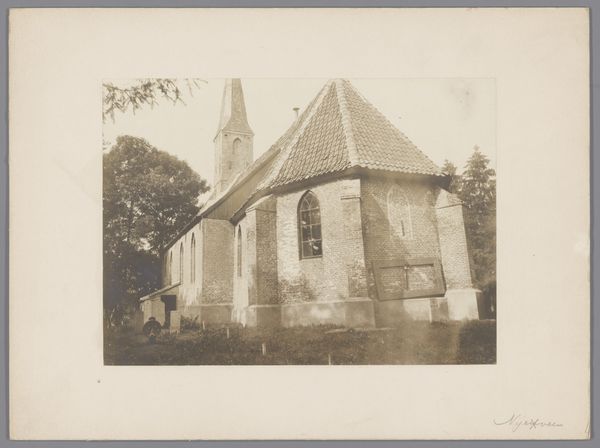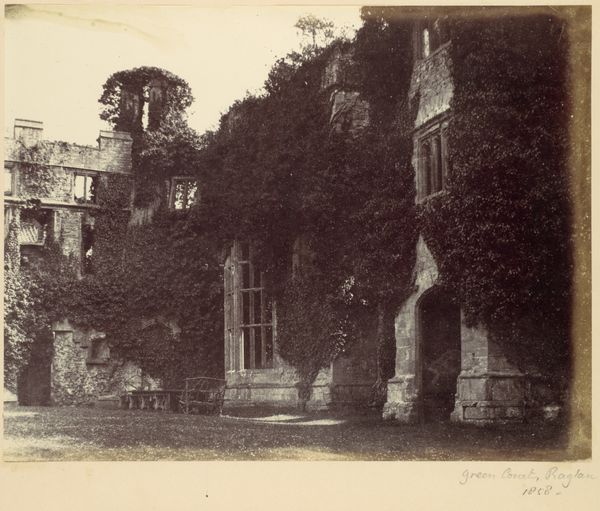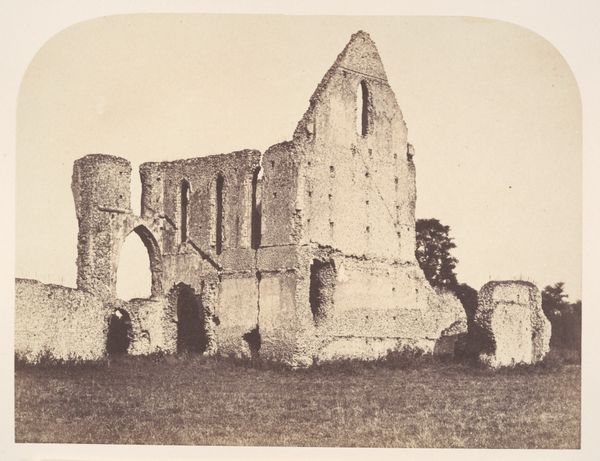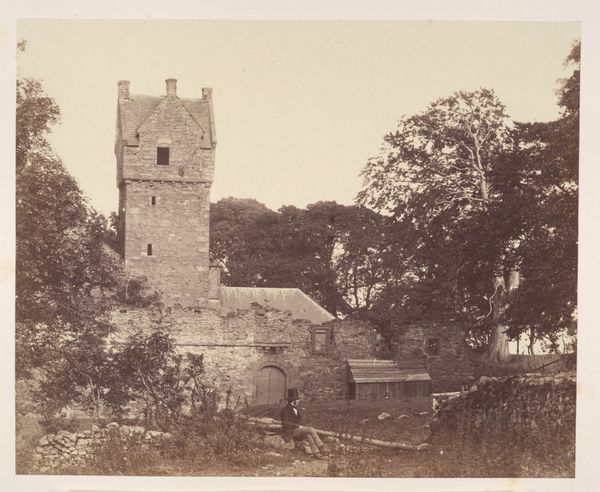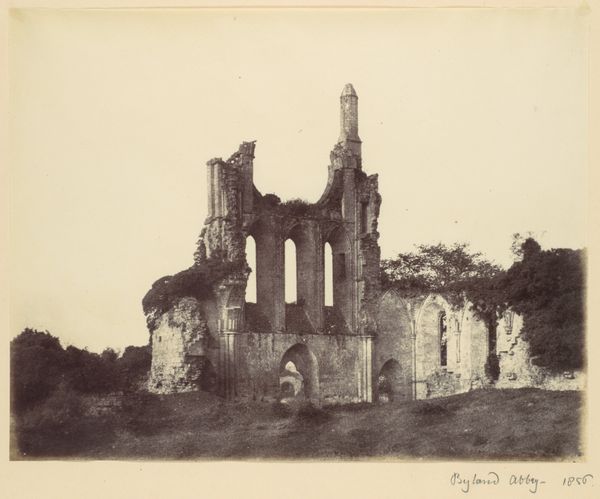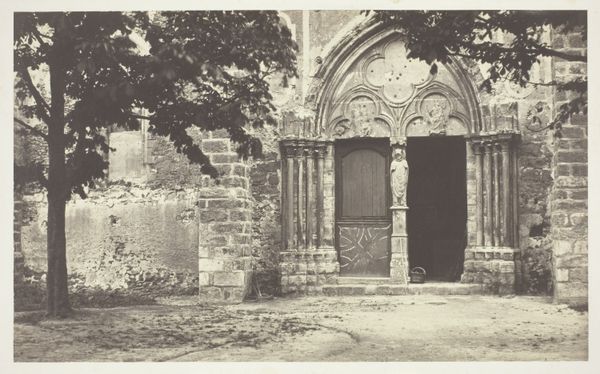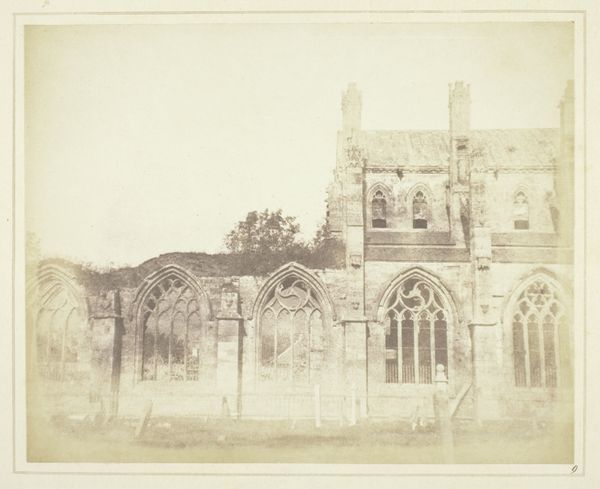
Dimensions: height 168 mm, width 217 mm, height 318 mm, width 440 mm
Copyright: Rijks Museum: Open Domain
Editor: This gelatin silver print, taken between 1855 and 1890 by Augustus Kelham, depicts the ruins of Haughmond Abbey. The stark contrast between the stone and the overgrown vegetation gives it a melancholic feel. How do you interpret the composition of this image? Curator: The strength here lies in its formal qualities: the arrangement of tonal values, the geometric breakdown of the abbey structure against organic growth. Note the way Kelham has distributed light and shadow. Observe the geometric organization inherent within the architectural elements contrasting to the more natural shape of the environment around. Editor: That’s interesting! So you’re less focused on what the abbey *represents* and more on how it’s *constructed* visually? Curator: Precisely. The linear progression of the archways draws the eye, creating a dialogue between interior and exterior space. What happens, though, when our eye meets the subtle placement of a person positioned outside, to the right, in full darkness? Editor: I hadn't noticed him at first. Does he serve to highlight the scale and isolation? Curator: Perhaps. More acutely, he anchors and redirects the gaze through this photographic tableau. Does his inclusion then alter how we regard the ruin itself? Does the added element help you think about relationships such as scale and darkness, in the composition? Editor: It’s all about how the different parts fit together to create the picture. I am beginning to grasp that! Thanks. Curator: Indeed. A successful photograph leverages its visual components to evoke particular perceptual experiences, whether deliberately or incidentally.
Comments
No comments
Be the first to comment and join the conversation on the ultimate creative platform.
